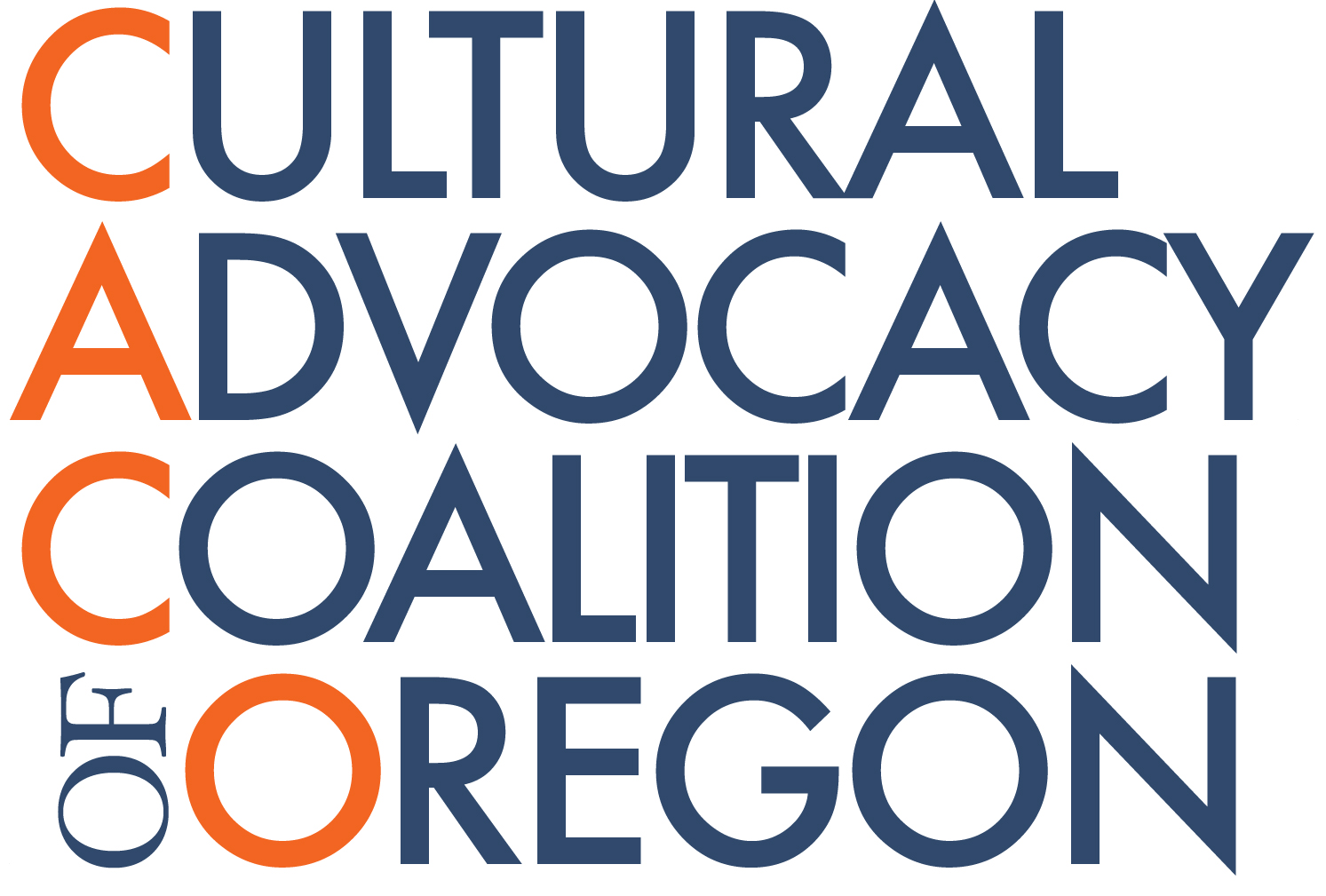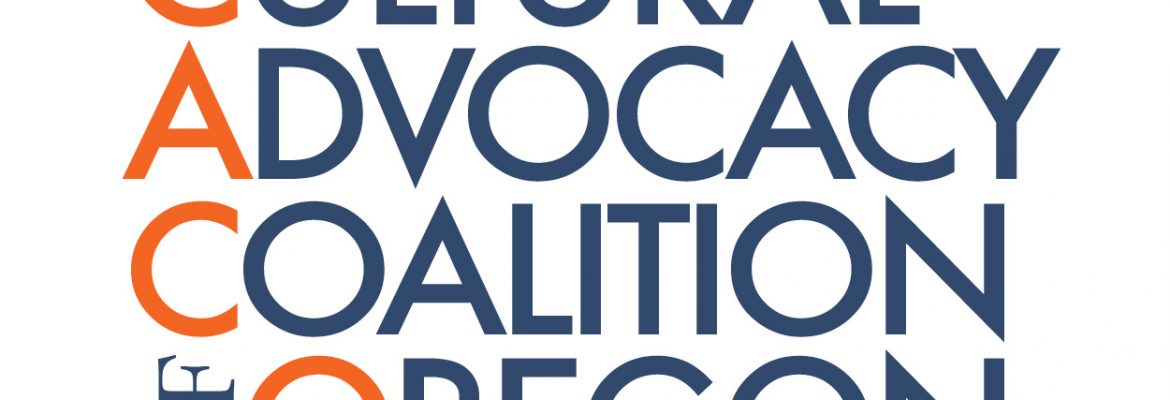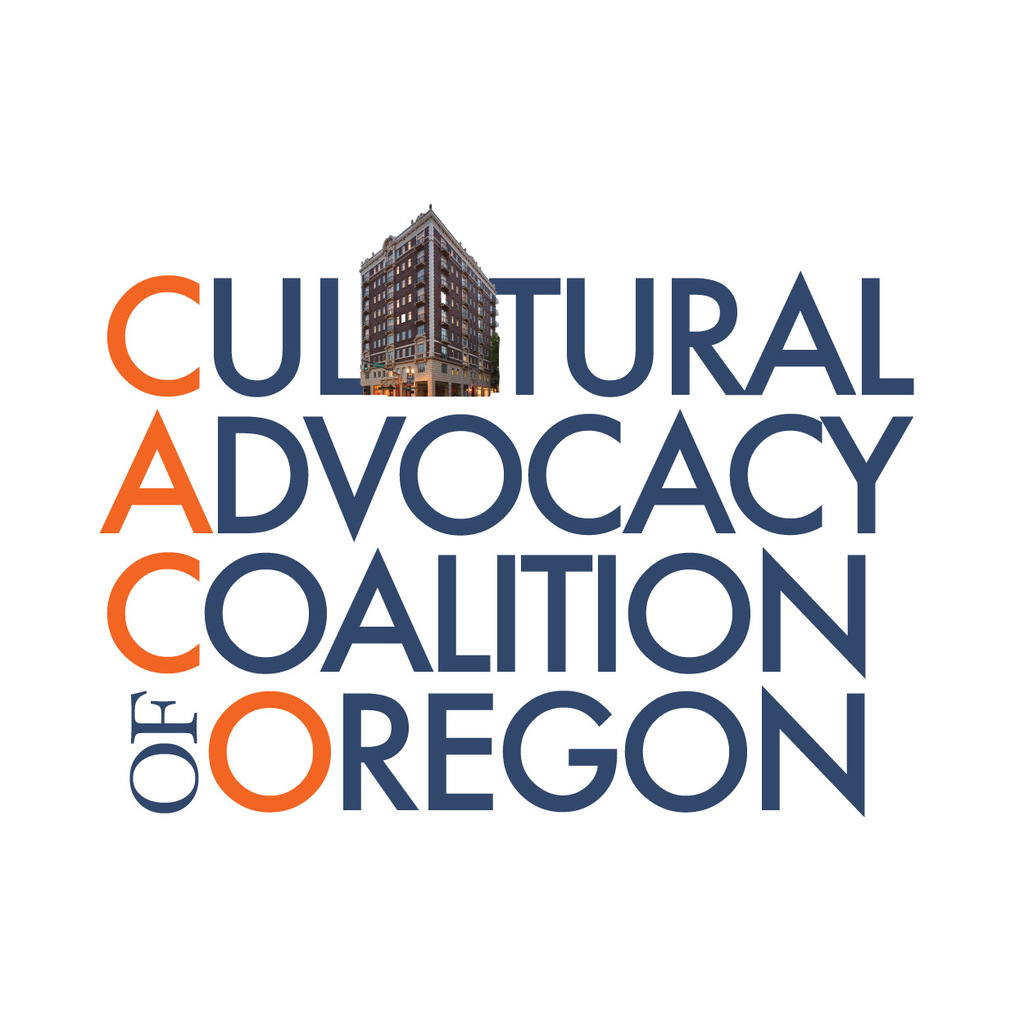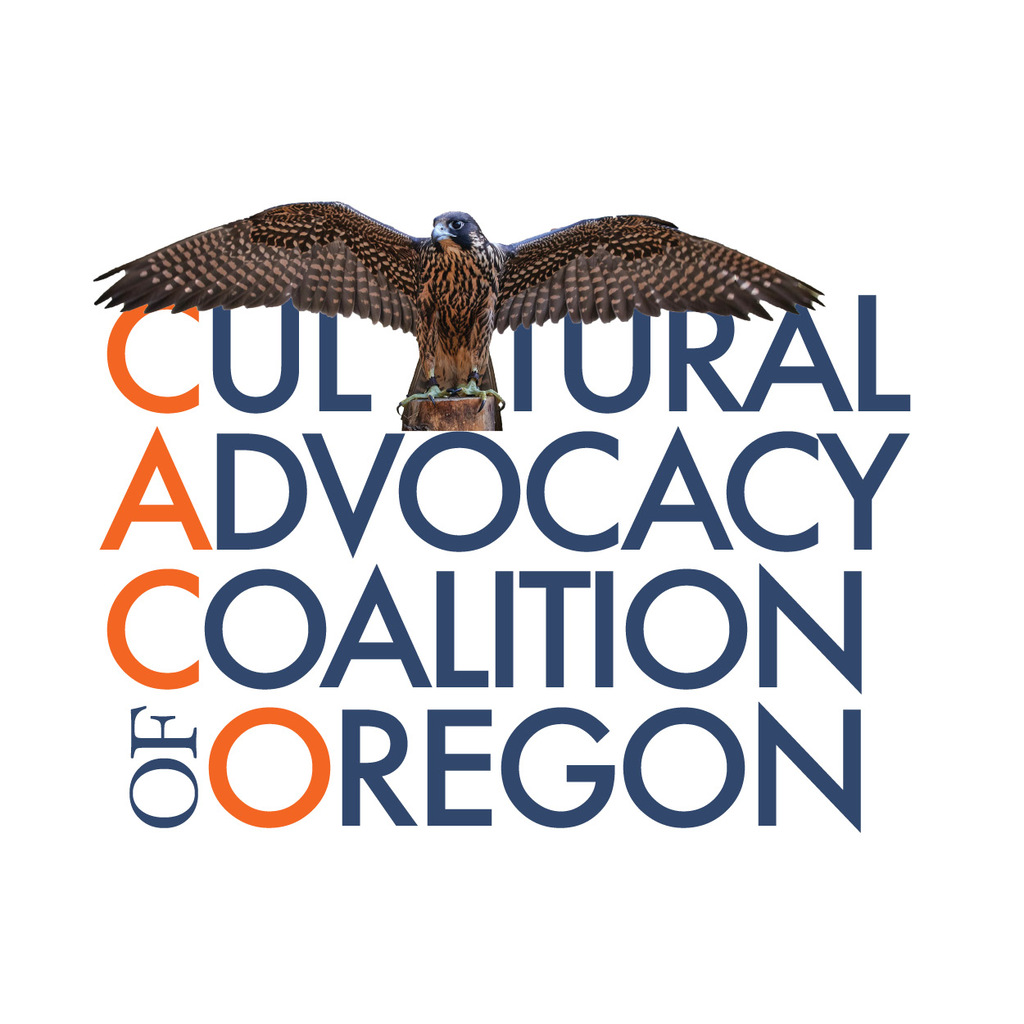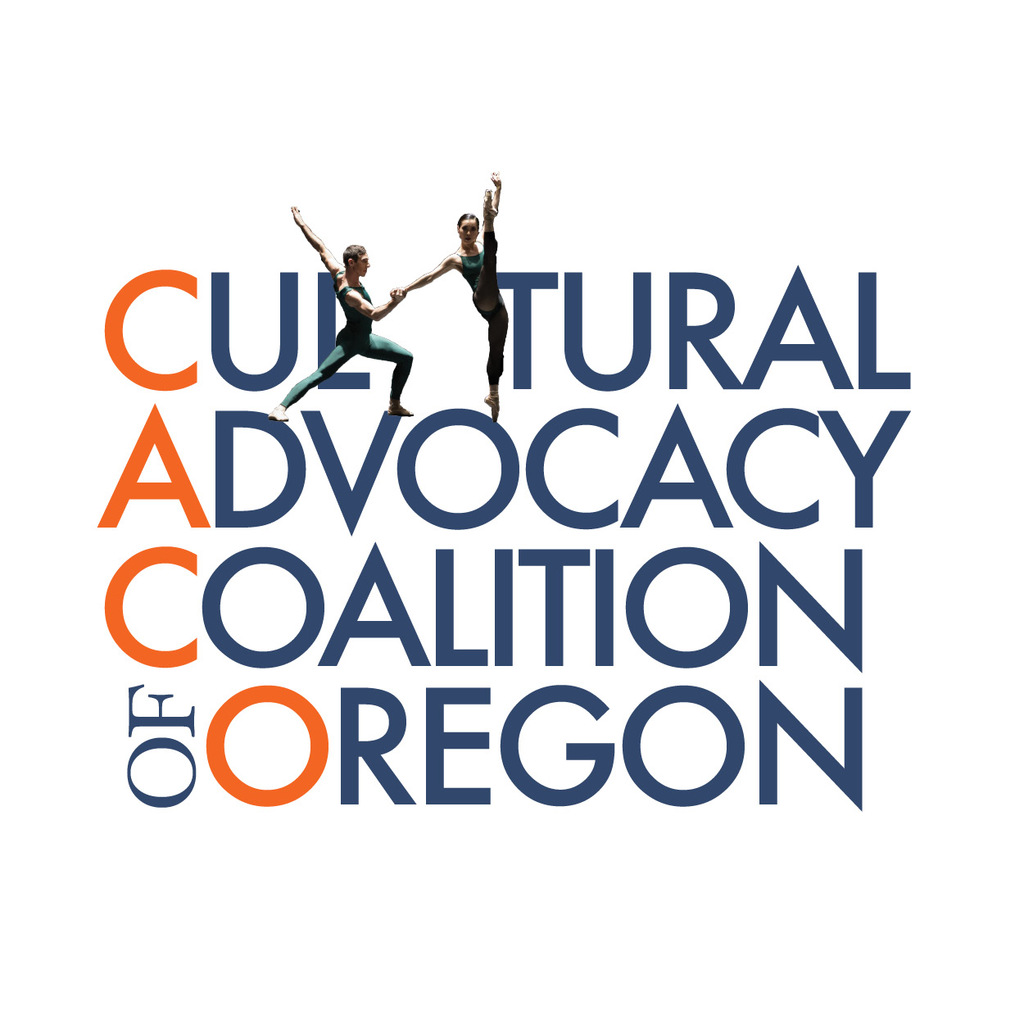New Look, Same Coalition
When all volunteers first formed the Cultural Advocacy Coalition of Oregon (CACO) over two decades ago, they did so to ensure policymakers in Oregon understood the importance that arts and culture played in Oregon’s day-to-day life, from its character to its economy.
Throughout this growth, we had one logo, a lettermark with a “c” and a hidden “a” at the center that often went unseen. While the mark served us for more than 10 years, our board of directors and staff recognized that we were due for a change.
We sought to create a more engaging and contemporary logo to represent our organization in the many years ahead. Our approach was to be straightforward and consider longevity, something that could literally expand to represent and include the organizations and diverse people and missions we advocate for. But how could one logo say it all? The Coalition’s membership stretches from the Willamette Valley to the Coast and the High Desert, representing dancers, theaters, artists, museums, libraries, historical societies, orchestras, and other musical outlets. We also needed a mark that Oregon policymakers would recognize and enjoy seeing in the hundreds of emails and letters we send each legislative session.
Our board of directors and staff also realized it was finally time to update our name to include our place, Oregon. We are now the Cultural Advocacy Coalition of Oregon, aka CACO (pronounced by each letter “C” “A” “C” “O”).
Our new mark today represents who CACO is: Trusted, Experienced, Growing & Necessary. The new logo is a reinvigoration of our past, a style that is not overly sleek, as trends come and go, but true to our mission in advocating and forging meaningful relationships with Oregon’s legislature in ensuring policymakers support equitable and inclusive processes in funding and policies for a thriving cultural sector. We can now expand the lines of our logo, just as we do in our work, to include real images of the thousands of organizations and people working to make Oregon a more vibrant place.
“At a time when people are coming together to acknowledge the importance of the cultural sector, we want Oregon to see CACO as the dynamic, advocacy leader we’ve always been,” said CACO Senior Advisor Sue Hildick. “Whether it’s by inspiring and teaching people how to talk to their legislator for the first time, or sharing the importance of arts in their life, we’re looking forward to building a larger network of cultural advocates from all walks of life.”
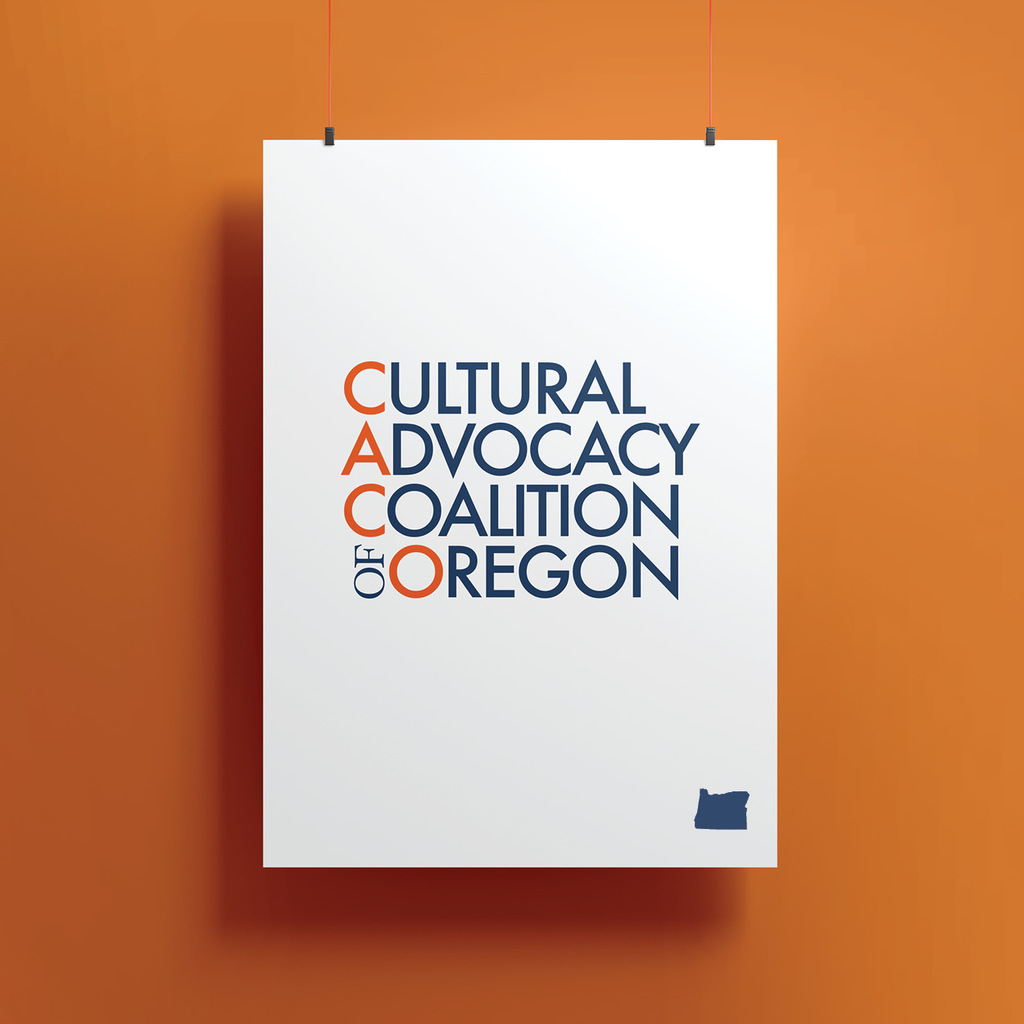
Captions & Photo Credits:
Building – Sovereign Hotel in downtown Portland. Photo by Sally Painter. | Provided by Restore Oregon
Dancers – Makino Hayashi with Christopher Kaiser in William Forsythe’s “In the Middle Somewhat Elevated” – Yin Yi Photography. | Oregon Ballet Theatre
Falcon – Peregrine falcon. Photo by Abbott Schindler. | High Desert Museum
Our Equity Commitment
The Coalition is committed to cultural equity and strives to embody values, policies, and practices that ensure that all people—including but not limited to those who have been historically underrepresented based on race, ethnicity, age, disability, sexual orientation, gender, gender identity, socioeconomic status, geography, citizenship status, or religion—are represented in the development of arts policy; the support of artists; the nurturing of accessible, thriving venues for expression; and the fair distribution of programmatic, financial, and informational resources.
Land Acknowledgement
The Coalition acknowledges the many tribes and bands who call Oregon their ancestral territory, including: Burns Paiute; Confederated Tribes of Coos, Lower Umpqua and Siuslaw; Confederated Tribes of Cow Creek Lower Band of Umpqua; Confederated Tribes of Grand Ronde; Confederated Tribes of Siletz Indians; Confederated Tribes of Warm Springs; Confederated Tribes of Umatilla Indian Reservation; Coquille Tribe; and Klamath Tribes. We honor the ongoing relationship between the land, plants, animals and people indigenous to this place we now call Oregon. We recognize the continued sovereignty of the nine federally recognized tribes who have ties to this place and thank them for continuing to teach us how we might all be here together.
